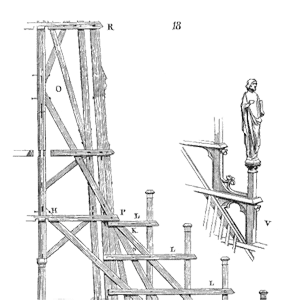
Reliability Analytics for Asset Management
Abstract
James and Fred discussing data analysis tools for use in asset management work.
Key Points
Join James and Fred as they discuss the perceived lack of reliability statistical tool use and why.
Topics include:
- The lack of awareness and data to use statistical tools
- We have data, not information for effective analysis
- Taking action of the information created by the data analysis
Enjoy an episode of Speaking of Reliability. Where you can join friends as they discuss reliability topics. Join us as we discuss topics ranging from design for reliability techniques, to field data analysis approaches.

 Ask a question or send along a comment.
Please login to view and use the contact form.
Ask a question or send along a comment.
Please login to view and use the contact form.
Fred, regarding Reliability Analytics for Asset Management there are several issues that should be mentioned. Your statements about the quality of the data is appropriate. However, when you dive down into the issue you have the following issues:
1. Poor quality in the failure data. (i.e. make, model, manufacturer, serial number etc).
2. Asset structure/hierarchy not defined or incomplete.
3. Rotating/repairable parts and/or sub-assemblies not tracked
For rotating/repairable parts that are removed and reinstalled into other equipment the issue is that you need to know the following:
1. When and where the part is initially installed. (Beginning of life)
2. When failed
3. When removed and repaired (complete failure codes- Problem/Cause/Remedy)
a. These codes need to be reviewed by either the supervisor or reliability engineer.
4. When sent back to inventory
5. When and where the part was reinstalled.
For many repairables this cycle is repeated (pumps, electrical sub-assemblies, mechanical parts). With the above you have a complete repair history and can perform Weibull on the basis of Make, Model, Serial No/Lot. Many organizations do not have a culture of this level of detail in tracking this information. Some lower tier CMMS don’t have this capability. Some organization fail to realize the importance of tracking rotating assets in this manner.
I worked as a reliability engineer in a transit organizations and ran into some of these type of issue. The reliability engineer will need to review the rotating asset repair process to ensure that:
1. There is a process in place
2. That the CMMS can support the defined process for tracking rotating assets.
Once these processes are instituted it could take as least 1 year to obtain actionable data after analysis. A simple pareto analysis will go a long way. More detailed analysis for comparison of reliability at x (miles, time etc) has been very useful. I’ve had much success using the MCF as alluded to in the webinar.
Michael H. Smith
Hi Michael,
Thanks for the excellent addition to the discussion. All good information and advice.
With your permission, I’d like to feature your comments in an upcoming article on the site. Or, if you’d like, you could flush this out a little to be a guest post directly.
Thanks for sharing your experience.
Cheers,
Fred